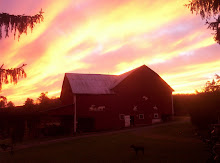There are those that avoid using manures because of "weeds and seeds" that wind up back in the garden.That's OK in my book.It's more like timothy & rye seeds that get expelled ~ hay seed & grasses.I prefer organics.The hay is mulch to soften the clay soil, the molds and manures carry all sorts of wonderful flora that build the soil and my garden has become a kingdom of earthworms because of it.Earthworms do so much more than just aerate the soil." Their casts are 5 times richer in available nitrogen, 7 times richer in available phosphate, and 11 times richer in available potash, than the upper 6 inches of the soil.Some 25 TONS of fresh worm casts are produced EVERY YEAR on each acre of properly farmed land." (Sir Albert Howard, Letter to the London Sunday Times 2/27/1944.) These castings are neutral colloidal humus, the only form immediately available to plants.Earthworms ventilate and drain the land as well as transform trash to balanced plant food.Top soil swarms with insect and rodent life.The richer the topsoil in organic matter,the larger will be its living population (unless it is drugged or killed with chemical fertilizers , poisonous sprays or dusts) and the more friable for production and use. " (Helen & Scott Nearing, THE GOOD LIFE :SIXTY YEARS OF SELF SUFFICIENT LIVING p.96)
And so, on a warm spring day in June, I will be on my knees digging holes to transplant my young vegetable plants from their starter flats to the big garden. This is a fisherman's bait paradise. There is rarely a spot that I dig where an earthworm is not exposed. My chickens know this.Later they follow behind me as I make fresh furrows with the rototiller . It is the Spring Chicken Parade as they pause , scratch and peck, then resume their walk.One finds an exposed cut worm and everybody pounces .One hen emerges from the brawl with a fat worm and runs off with it far from the scuffle.I cover the night crawlers and red trout worms with cool moist soil so the beaks won't find them.These are my garden friends.Cut worms and several bug species are not, so I allow the chickens to scratch and search. Over the course of the winter, the chickens and turkeys will search through the dumped hay and manure and do a better job of spreading it about in an even manner than I have done today.Discarded sheep wool will be worked into the furrows and will hold moisture for young plant roots. ~ I love symbiosis ! (:>


No comments:
Post a Comment